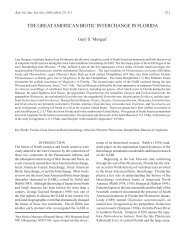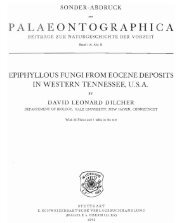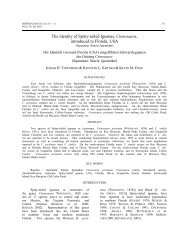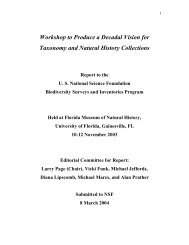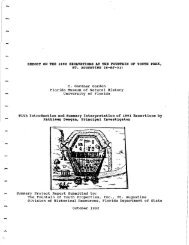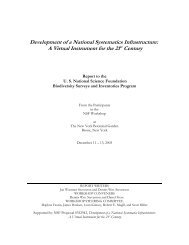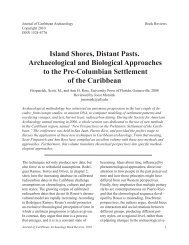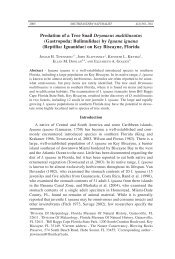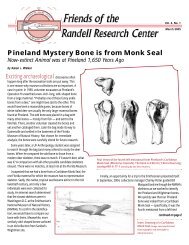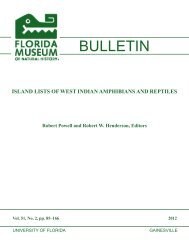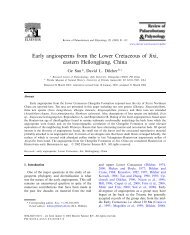COMPOSITIONAL ANALYSIS OF FRENCH COLONIAL CERAMICS ...
COMPOSITIONAL ANALYSIS OF FRENCH COLONIAL CERAMICS ...
COMPOSITIONAL ANALYSIS OF FRENCH COLONIAL CERAMICS ...
You also want an ePaper? Increase the reach of your titles
YUMPU automatically turns print PDFs into web optimized ePapers that Google loves.
Compositional Analysis of French Colonial Ceramics Kelly et al.<br />
Figure 1. Sampled sites in Martinique, Guadeloupe, and St Martin.<br />
double-chamber kiln, each chamber of which<br />
measures about 4 m square, and the stillactive<br />
pottery at Trois Ilets, Martinique, are<br />
most notable. The sherds collected from eight<br />
production sites (three on Guadeloupe, five<br />
on Martinique) were augmented by sherds<br />
excavated from two plantation sites on<br />
Guadeloupe, an urban site in Basse Terre,<br />
Guadeloupe, a surface collection from the<br />
island of St. Martin, and sherds of modern<br />
production in St. Anne, Martinique (Figure<br />
1). In most cases these sherds were remains<br />
of industrial pottery vessels such as sugar<br />
drip jars and sugar cones, although some<br />
domestic wares such as cooking and serving<br />
vessels and pitchers were included as well.<br />
These samples were analyzed by INAA and<br />
optical thin-section petrography to identify<br />
chemical, mineralogical, and physical<br />
composition properties.<br />
Context<br />
Although locally- and regionally-produced<br />
ceramics in the Caribbean have been studied<br />
by a number of scholars (see Crane 1993;<br />
Ebanks 1984, 2002; Handler 1963; 1964;<br />
Hauser and Armstrong 1999; Hauser and<br />
DeCorse 2003; Heath 1988; Mathewson<br />
1972; McCusick 1960; Petersen et al. 1999;<br />
Vérin 1963 ), few have systematically<br />
catalogued and completed compositional<br />
studies of these wares. During the eighteenth<br />
and nineteenth centuries, local earthenwares<br />
were manufactured at scales of both craft and<br />
industrial production as utilitarian household<br />
wares for use by enslaved laborers and<br />
others, and industrially as vessels used in the<br />
processing and storing of sugar in the<br />
plantation industries. Among the few<br />
compositional studies that have been<br />
undertaken of either hand-built or wheel-<br />
Journal of Caribbean Archaeology, Special Publication #2, 2008 87



